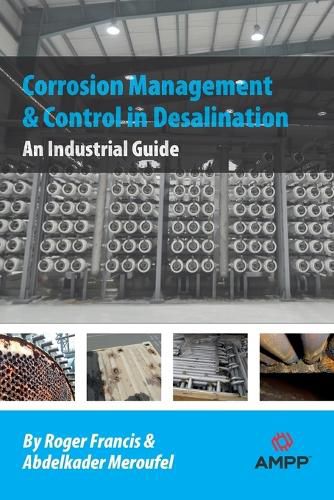Readings Newsletter
Become a Readings Member to make your shopping experience even easier.
Sign in or sign up for free!
You’re not far away from qualifying for FREE standard shipping within Australia
You’ve qualified for FREE standard shipping within Australia
The cart is loading…






This title is printed to order. This book may have been self-published. If so, we cannot guarantee the quality of the content. In the main most books will have gone through the editing process however some may not. We therefore suggest that you be aware of this before ordering this book. If in doubt check either the author or publisher’s details as we are unable to accept any returns unless they are faulty. Please contact us if you have any questions.
The world's population is steadily increasing and with it is an increasing demand for freshwater, for both drinking and irrigation. In many areas of the world, particularly in arid regions, there are limited freshwater sources such as rivers and groundwater, so desalination is being increasingly used to produce freshwater to satisfy both requirements. Although desalination is sometimes carried out on brackish waters and highly saline well waters, most desalination plants generate fresh water from seawater with a daily production that reached 95 million m3/day in 2019.
Drs. Francis and Meroufel have been active in all types of desalination plants for many years, either solving corrosion problems, or, less often, preventing them from happening. There are very few publications that discuss the specific corrosion problems in desalination plants, and there are none written with the plant engineer in mind. Plant engineers often do not have an in-depth knowledge of corrosion, and because of this, they need help with day-to-day problems that may involve corrosion.
Modern desalination plants are often designed with a 40-year lifespan, so it is important that plant engineers know how to tackle corrosion problems to maintain water production without shutdowns or, in extreme cases, shortening plant life.
This book was conceived as being a helpful guide that can sit on an engineer's desk, and which will give advice not just on diagnosing corrosion failures, but on how to monitor the plant's resistance to corrosion by inspection and monitoring.
$9.00 standard shipping within Australia
FREE standard shipping within Australia for orders over $100.00
Express & International shipping calculated at checkout
This title is printed to order. This book may have been self-published. If so, we cannot guarantee the quality of the content. In the main most books will have gone through the editing process however some may not. We therefore suggest that you be aware of this before ordering this book. If in doubt check either the author or publisher’s details as we are unable to accept any returns unless they are faulty. Please contact us if you have any questions.
The world's population is steadily increasing and with it is an increasing demand for freshwater, for both drinking and irrigation. In many areas of the world, particularly in arid regions, there are limited freshwater sources such as rivers and groundwater, so desalination is being increasingly used to produce freshwater to satisfy both requirements. Although desalination is sometimes carried out on brackish waters and highly saline well waters, most desalination plants generate fresh water from seawater with a daily production that reached 95 million m3/day in 2019.
Drs. Francis and Meroufel have been active in all types of desalination plants for many years, either solving corrosion problems, or, less often, preventing them from happening. There are very few publications that discuss the specific corrosion problems in desalination plants, and there are none written with the plant engineer in mind. Plant engineers often do not have an in-depth knowledge of corrosion, and because of this, they need help with day-to-day problems that may involve corrosion.
Modern desalination plants are often designed with a 40-year lifespan, so it is important that plant engineers know how to tackle corrosion problems to maintain water production without shutdowns or, in extreme cases, shortening plant life.
This book was conceived as being a helpful guide that can sit on an engineer's desk, and which will give advice not just on diagnosing corrosion failures, but on how to monitor the plant's resistance to corrosion by inspection and monitoring.